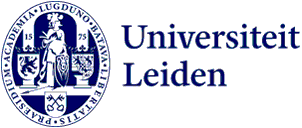
New interactive book helps motivate young people and tackle bullying
How do you deal with bullying? How can you motivate young people? At the NeurolabNL symposium a multidisciplinary research team launched an interactive book for teachers and youth workers. This digital book offers the latest insights and plenty of useful tips and advice. Children’s Ombudsman Margrite Kalverboer and Mayor Henri Lenferink praised the initiative.
The brain develops differently in children who have frequently been bullied. This is just one of the results of a recent study of 600 children in Rotterdam. Why the brain develops differently and whether bullying really is the cause is not yet clear. What the researchers do know is that early prevention helps reduce bullying. But what works best for whom?
The online symposium, which was presented from Studio Wibar in Leiden on 31 January, was the culmination of four years of research by NeurolabNL. This national partnership has its origins in the Dutch Research Agenda (NWA) Startimpuls programme. Researchers from different universities and disciplines, including pedagogical scientists, psychologists and neuroscientists, have conducted research into practical applications of knowledge about the brain and behaviour.
‘Start a support group for pupils who have been bullied and make bullies part of the solution.’
Education and safety for young people
The digital information book ‘Onderwijs en Veiligheid voor jongeren’ (Education and Safety for Young People) can be downloaded for free and covers topics such as motivation, social exclusion and antisocial behaviour. Research has shown that if young people know they are up to a challenging task, they will be more motivated and actually want to learn. The task should therefore be neither too hard nor too easy. The book also links to the Breineducatie (Brain Education) module that teaches young people more about how the brain works and how they themselves can influence their learning success. Teachers can use the Motivatie-motor (Motivation Motor) tool to evaluate and improve their own teaching practice.

Preventing and tackling bullying
The information on the topic of social exclusion is also both scientific and practical. There is an analysis of three anti-bullying programmes with recommendations on how to improve children’s social skills. The advice is to teach children complex skills too, including gaining insight into another’s intentions and using constructive communication to state what you want. And there is practical advice for teachers, such as come up with class rules together, start a buddy system and support group for victims and make bullies part of the solution.
From the Children’s Ombudsman to the Mayor
Children’s Ombudsman Margrite Kalverboer and Mayor Henri Lenferink praised the initiative. Kalverboer: ‘These are topics that are very much alive in society. If you were bullied as a child, this often still affects you as an adult. That’s why it’s so important that this kind of knowledge is put into practice.’ Mayor Lenferink agreed: ‘It’s good that researchers think not only about how a problem has arisen but also about how we can solve it. We’ve seen a huge increase in sadness and loneliness during the pandemic. And we know from previous research in Leiden, which was also evaluated by NeurolabNL, that you need to identify abnormal behaviour as early as possible to prevent later problems.’
New university strategy
Rector Hester Bijl and Paul Wouters, Dean of the Faculty of Social And Behavioural Sciences, praised the interdisciplinary approach and collaboration with society. ‘This programme aligns perfectly with our new university strategy,’ said Bijl. ‘Issues such as learning problems and bullying are often complex and require expertise from multiple disciplines and input from society.’
Leiden psychologist Annelinde Vandenbroucke is the coordinator of this Startimpuls programme and co-organiser of the symposium. An entire team of Leiden researchers is involved in this programme, see related researchers. A video report about the symposium will be added to this article later this week.
Text: Linda van Putten
Photos: Marc de Haan
